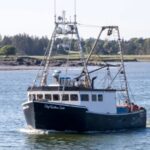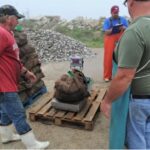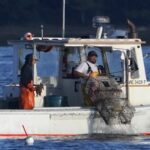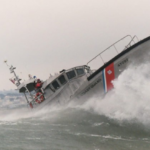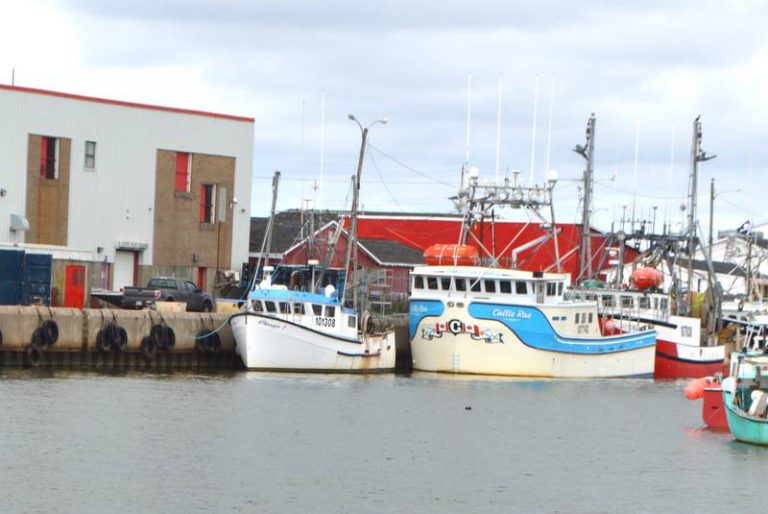Tag Archives: striped-bass
Virginia fisherman sentenced for illegally harvesting $37K worth of striped bass
 A Virginia fisherman has been sentenced for illegally harvesting striped bass over the course of several years. Commercial fisherman Keith J. Martin, 52, was sentenced to four months in prison on Oct. 26. He was required to begin his sentence by noon Dec. 12. It was recommended by the court to the Bureau of Prisons that Martin be incarcerated in a medical facility. Upon his release, Martin was sentenced to three years of supervised release. On the condition of and for the duration of his supervised release, Martin will be prohibited from participating in any form of commercial fishing,,, >>click to read<< 09:11
A Virginia fisherman has been sentenced for illegally harvesting striped bass over the course of several years. Commercial fisherman Keith J. Martin, 52, was sentenced to four months in prison on Oct. 26. He was required to begin his sentence by noon Dec. 12. It was recommended by the court to the Bureau of Prisons that Martin be incarcerated in a medical facility. Upon his release, Martin was sentenced to three years of supervised release. On the condition of and for the duration of his supervised release, Martin will be prohibited from participating in any form of commercial fishing,,, >>click to read<< 09:11
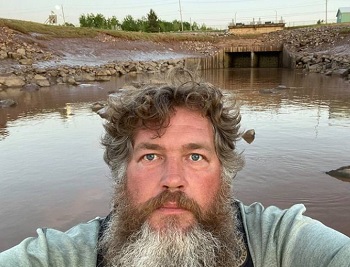
Fisherman Darren Porter has been keeping a one-man vigil at the Windsor causeway since last Thursday
The Hants County weir fisherman and marine science data collector has been floating in his open boat up to 20 hours a day to raise awareness for the lack of fish being allowed up the Avon River. “About six minutes on a tide,” said Porter of the amount of time the big gates in the Windsor causeway are opened to allow water through. That, he argues, is not enough time to allow the inner Bay of Fundy salmon, shad, gaspereau, striped bass and tom cod to get up the Avon River. That also, he argues, puts the operators of the gates (Department of Agriculture) in violation of the federal Fisheries Act. >click to read< 09:03
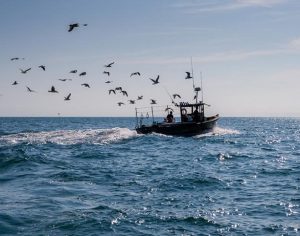
Regulators Take Action to Stem Striped Bass Decline
Responding to the precipitous drop in the Atlantic striped bass population, the Atlantic States Marine Fisheries Commission (ASMFC) has mandated an 18 per cent cut in commercial and recreational harvest quotas for 2020.,,, The new addendum limits recreational fishermen to one striped bass per day,,, Mr. McKiernan said he doesn’t believe that pressure from commercial fishermen, who are limited to 15 fish per day, a 34-inch minimum and two fishing days a week, plays a major role in the plummeting population. >click to read< 18:52

Fishermen brace for cuts to striped bass fishing
East End fishermen are speaking out against proposed cuts that could reduce the harvest of striped bass,,, The Atlantic States Marine Fisheries Commission, which regulates fishing in coastal states from Maine to North Carolina,,, Commercial fishermen must adhere to strict limits on striped bass. Capt. Mark Phillips of the Illusion in Greenport, for example, was issued tags for 219 stripers this year, according to his wife, Mary Bess.,,, Congressman Lee Zeldin (R-Shirley) is an outspoken critic of the proposed cuts. >click to read< 08:42
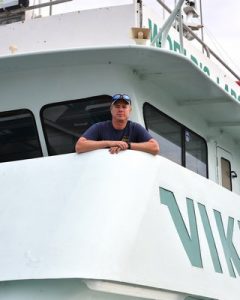
Striped Bass Recovery Debate Divides Fishermen
A roiling debate over how to reduce the annual harvest of striped bass along the Atlantic seaboard to allow the species to recover from years of overfishing has pitted the interests of various fishermen against each other and sparked heated exchanges.,,, The battle over how to proceed has focused primarily on what restrictions should be placed on recreational fishermen, who account for about 90 percent of the striped bass harvest, though the extent to which commercial fishermen should share in the cuts is also on the table. >click to read< 11:28
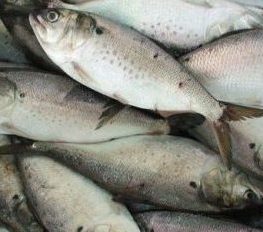
Striped bass are underfed, not overfished
Atlantic States Marine Fisheries Commission, or ASMFC, has determined (again!) that the number of spawning Atlantic striped bass is below the required threshold to maintain proper “recruitment” (newborns), and therefore, sustainable population abundance.,, Certainly, there is a lot of blame to go around, but the ASMFC seems to have only one conclusion: overfishing.,,, What about food?,,, This may be a shocking finding, but foreign-owned Cooke Inc., the owner of Omega Protein, “purse seins” hundreds of millions of pounds of menhaden a year,,, by Bev Landstreet >click to read< 09:36
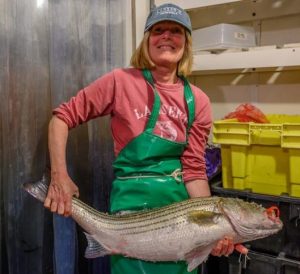
Commercial Striped Bass Season Opens, Amid Concerns About Fishery
By the end of the day Monday, the first day of the commercial striped bass season, the Menemsha Fish House had brought in 297 filleted pounds of the elusive — and profitable — fish. Otto Osmers, a commercial fisherman and fishmonger at the Fish House, said it was an about average commercial day in terms of pounds of fish landed. And he acknowledged that the season begins amid concern among fishermen and regulators over declining stocks. >click to read<10:05

Rep. Zeldin Blasts NY’s ASMFC Delegates for Failure to Deliver for NY Fishermen
Today, Congressman Lee Zeldin (R, NY-1) blasted New York’s delegates to the Atlantic States Marine Fisheries Commission (ASMFC) following the conclusion of this month’s spring meeting, during which no progress was made in rectifying New York’s already inequitable quotas for species across the board, including Black Sea Bass, Striped Bass and Fluke. >click to read<19:10

Fisherman pulls monster bass from Annapolis River after tidal station shutdown
According to Fisheries and Oceans Canada, striped bass used to spawn in the Saint John, Annapolis and Shubenacadie river systems on the Bay of Fundy. The causeway built across the Annapolis River in 1960 and the Annapolis Royal Tidal Generating Station that opened in 1984 have been widely blamed for driving the fish from that river. Meanwhile the Saint John population dropped off after the Mactaquac Dam was built in 1968. But after decades of protests,,, >click to read<09:50
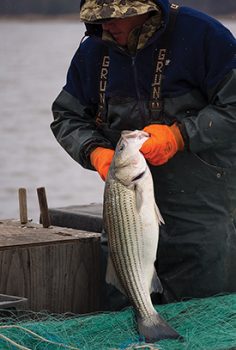
ASMFC says rockfish harvests need to be cut 17 percent
East Coast fishery managers last week took the first steps toward cutting the striped bass harvest 17 percent next year to help end overfishing of the popular species, which has been in decline for years. Options about how the harvest should be reduced will be presented to the Atlantic States Marine Fisheries Commission at its August meeting, after which proposals would go out for public comment. Final measures could be approved in October.,,, The issue of such “dead discards” — fish that die after being released by anglers — has gained more attention from fishery managers because the new assessment found,,, >click to read<08:45
Gerald Almy: Virginia’s trophy saltwater striped bass season canceled – >click to read<09:19

Massachusetts Enacts Striped Bass Conservation Regulations
The Massachusetts Division of Marine Fisheries has implemented two new striped bass conservation regulations aimed at reducing release mortality:
• Effective immediately, it is unlawful for any fisherman to gaff or attempt to gaff striped bass measuring less than 28 inches total length, and for a commercial fisherman fishing on an open commercial striped bass fishing day to gaff striped bass measuring less than 34 inches total length. >click to read<10:36 ‘There’s going to be no fish to fight over at all’: The Chesapeake Bay’s rockfish population is falling – >click to read<14:46
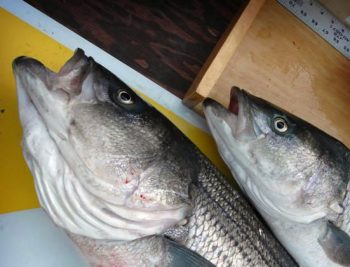
Maryland overfishing imperils rockfish population – Recreational anglers are largely responsible
“The recent stock assessment shows that early action is needed to slow the decline and restore this fishery to sustainable levels,” Virginia Marine Resources Commissioner Steven G. Bowman said in a statement.,,, Recreational anglers are largely responsible. Since 2008, they have killed eight times more striped bass than commercial fishermen, with Maryland anglers harvesting a huge haul: nearly three times the number of fish taken by Maine, New Hampshire, Rhode Island, Connecticut, Delaware and North Carolina — combined. >click to read<14:49
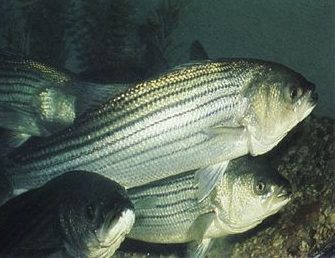
ASMFC expected to set stricter regs for harvesting striped bass
A new status review has found the striped bass population to be in worse shape than previously thought, a result that will almost certainly trigger new catch restrictions for the prized species next year in the Chesapeake Bay and along the East Coast. A preview of a soon-to-be-released stock assessment presented in February to the Atlantic States Marine Fisheries Commission indicates that the striped bass population is overfished and has been for several years.,,, While most everyone agrees on the need to act, many caution that the stock is nowhere near the crisis level that spurred the previous moratorium. Today’s spawning stock biomass, while declining, is still four times higher than it was in the early 1980s.>click to read<10:53
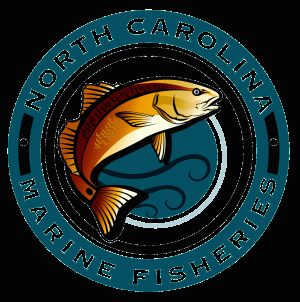
N.C. Division of Marine Fisheries issues proclamations that close striped bass season
N.C. Division of Marine Fisheries has issued proclamations that close striped bass season for commercial and recreational fishermen in all internal waters from just south of Oregon Inlet to the South Carolina line. Both commercial and recreational fishermen across the state could find themselves heavily impacted as the result of a new fishing ban passed at the special meeting Wednesday in Kinston. The commission passed a motion by a vote of 5-4 to ban the use of gill nets above what are known as the ferry lines, in areas of the Pamlico and Neuse Rivers. >click to read<10:06
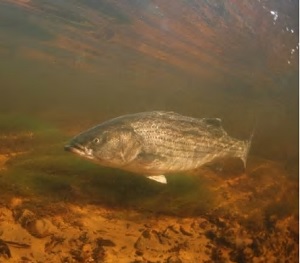
Striped bass population drops sharply in Gulf of St. Lawrence
The spawning population of striped bass in the Gulf of St. Lawrence plunged in 2018, ending a remarkable run of sustained growth over the past decade, according to a newly released update from Canada’s Department of Fisheries and Oceans. The average estimate is now about 333,000, down from 900,000 in 2017. DFO’s analysis notes its 2018 estimates vary widely from a low of 154,000 spawners to a high of 623,000. So why has the population of striped bass fallen? “Potentially it may be linked to the last few winters. Since 2017, it’s been very rough winters,” said Martin Mallet, a biologist and executive director of the Maritime Fishermen’s Union. >click to read<10:50

Chesapeake Bay surveys show striped bass doing just fine
Virginia and Maryland say seine surveys conducted over the summer show young-of-year stripers – those spawned this past spring – top historic averages and signal good fishing for commercial and recreational anglers in a few years. Mary Fabrizio, who heads Virginia’s survey, said annual sampling has important economic and ecological value and helps in managing the species. “By estimating the relative number of young-of-year striped bass, our survey provides an important measure of annual and long-term trends in the bay’s striped bass population,” >click to read<15:36
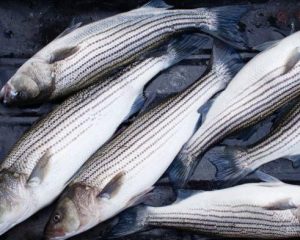
Proposal for tighter oversight of recreational striped bass catch dies
Commercial fishermen asked state regulators Tuesday night to make recreational fishermen tag their striped bass the way commercial operators do, to make sure they’re not taking too many fish. But the idea died when Doug Jenkins, president of the Twin Rivers Watermen’s group, in Warsaw, outlined his proposal to the Virginia Marine Resources Commission’s finfish management advisory committee. “We’re losing our rockfish (striped bass) quota and losing our crab industry,” Jenkins told the committee. >click to read< 18:32
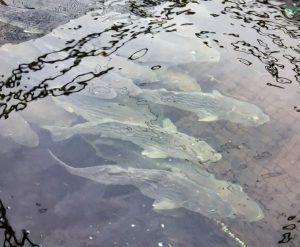
Striped bass population triples in Gulf of St. Lawrence
The remarkable recovery of striped bass in the southern Gulf of St. Lawrence reached unprecedented levels in 2017, according to the latest assessment from the federal Department of Fisheries and Oceans. Department scientists say the spawning population tripled between 2016 and 2017 and is now estimated at one million fish — a 100-fold increase from the 1990s. In addition to the population rebound, tagged striped bass from the Gulf were recovered from Rimouski, Que., north to Labrador for the first time in 2017. In the Forteau Bay area of Labrador, catches of tens of thousands were reported. >click to read<18:50

2018 Mass. DMF fishing regulations go into effect April 20
The Division of Marine Fisheries (DMF) has enacted new regulations, which were informed in part by this winter’s public hearings. The regulations were reviewed and approved by the Marine Fisheries Advisory Commission at its March 15 meeting, and go into effect on April 20. The most substantive change is an adjustment to the open commercial fishing days for black sea bass. The new open commercial fishing days are Sundays, Tuesdays, and Thursdays.,, The commercial black sea bass season will begin on Tuesday, July 10.,, During the inshore small-mesh trawl squid fishery, April 23–June 9, trawlers will be allowed to retain a 50-pound bycatch limit of black sea bass. >click to read<18:00
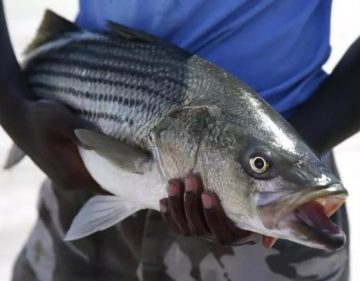
Should Massachusetts ban commercial striped bass fishing?
YES – Rip Cunningham: Dover resident who fishes in the Plymouth area; active member, Stripers Forever; former editor, Salt Water Sportsman; former chairman, Massachusetts Marine Fisheries Advisory Commission, and New England Fisheries Management Council.,, NO – Douglas Amorello: Plymouth resident, commercial lobsterman and multi-species fin fisherman, including for striped bass click here to read the story 15:52

Ban on commercial striper fishing weighed
Stripers were pushed to the brink of extinction in the late-1970s but made a dramatic comeback. Now recreational anglers say the coveted fish again is struggling, and they’re lobbying Beacon Hill to implement new limits that include making the fish off-limits to commercial fishermen. One proposal, filed Rep. Walter Timilty, D-Milton, would limit commercial licenses to fishermen who can demonstrate they’ve caught and sold more than 1,000 pounds of striped bass annually over the last five years. Another proposal, offered by Rep. Thomas Stanley, D-Waltham, would phase out commercial fishing for striped bass by 2025 and establish fines up to $500 per fish for violators of new regulations. click here to read the story 19:29
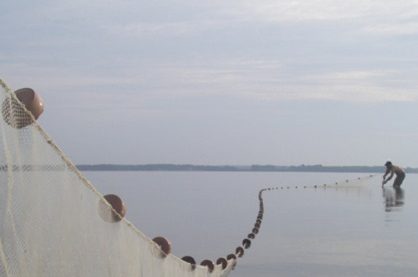
Juvenile striped bass maintain average abundance in Virginia waters in 2017
Preliminary results from an ongoing long-term survey conducted by researchers at the Virginia Institute of Marine Science suggest an average year class of young-of-year striped bass was produced in Virginia tributaries of Chesapeake Bay in 2017. The 2017 year class represents the group of fish hatched this spring that will grow to fishable sizes in 3 to 4 years. The program, formally known as the Juvenile Striped Bass Seine Survey, recorded a mean value of 8.98 fish per seine haul in the Virginia portion of Chesapeake Bay, which is similar to the historic average of 7.77 fish per seine haul. click here to read the story 08:16

DFO, NSP knew that Annapolis tidal turbine killed fish
Fisheries and Oceans Canada and Nova Scotia Power have long known that the Annapolis tidal turbine kills significant numbers of fish. As a result, Acadia University professor and former Fisheries and Oceans scientist Michael Dadswell is accusing Nova Scotia Power of being in violation of the Fisheries Act and the federal department of not enforcing it. “Either (Fisheries and Oceans) does not pay attention to its own scientists or they have been in cahoots with Nova Scotia Power all these years to deny the extreme decimation of the Annapolis fish populations,” said Dadswell. click here to read the story 18:29
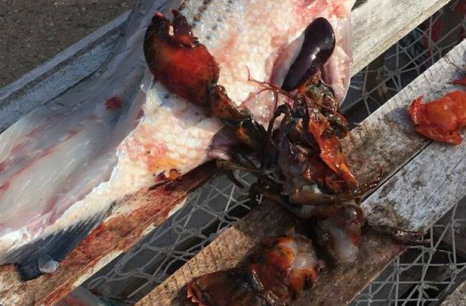
“There’s been an explosion of striped bass,” – VIDEO: Seafood diet of striped bass upsets Cape Breton fisherman
Believe it or not, Ray Briand wasn’t entirely surprised to find two lobsters stuffed inside a 72-centimetre-long striped bass he’d caught Wednesday night. That’s because the longtime Cape Breton fisherman believed his suspicions were confirmed. “They’re called wolves of the oceans for a reason,” said Briand, a Smelt Brook resident. “They fish in packs and they’re devastating our local fishing stocks. “There’s nothing left in our harbours except bass. Now we’re wondering if they’re going to damage our lobster industry; that’s what we’re really worried about.” Video, click here to read the story 12:19
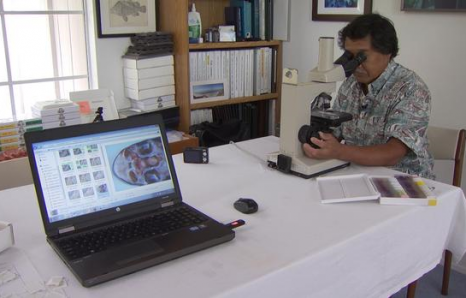
Thousands of Sharks, Other Sea Life Mysteriously Die in San Francisco Bay, State Says No Funding Available to Determine Cause
As many as 2,000 leopard sharks have mysteriously died in the San Francisco Bay over the past few months. The California Department of Fish and Wildlife says determining the cause is not a priority for the state since the sharks are not threatened or endangered, however, scientists say additional research and resources are crucial since the threat is now believed to be preying on other marine life. “This pathogen can tackle a variety of different species … we’ve had a much more diverse group of fish that have been found dead in the San Francisco Bay.” At least 500 bat rays, hundreds of striped bass, 50 smooth-hound sharks and about 100 halibut died in the bay between February and July, according to Okihiro’s estimates. Video, click here to read the story 09:24
Striper Poaching Season Begins in Maryland!
 On April 5, 2017, Maryland DNR reported that officers had charged nine men with possessing 87 striped bass from the waters of Dorchester County. On Saturday, an officer watched as four men caught striped bass and hid them in storm drains on Fishing Creek Bridge. The officer recovered 14 fish. Charged with possessing striped bass in a closed season were: Juan Manuel Bravo, 34, of Hyattsville; Emerson DeJesus Vargas Campos, 26, of Riverdale; Jairo Dario Ramierez, 22, of Upper Marlboro; and Elmer Antonio Castillo Araniva, 23, of Upper Marlboro. The next night, officers watched as five men from Prince George’s County caught fish and placed them in the trunk of an SUV. When officers stopped the vehicle and searched it, they found 73 striped bass in a duffel bag. There’s more! Lots more! continue reading the story here 17:03
On April 5, 2017, Maryland DNR reported that officers had charged nine men with possessing 87 striped bass from the waters of Dorchester County. On Saturday, an officer watched as four men caught striped bass and hid them in storm drains on Fishing Creek Bridge. The officer recovered 14 fish. Charged with possessing striped bass in a closed season were: Juan Manuel Bravo, 34, of Hyattsville; Emerson DeJesus Vargas Campos, 26, of Riverdale; Jairo Dario Ramierez, 22, of Upper Marlboro; and Elmer Antonio Castillo Araniva, 23, of Upper Marlboro. The next night, officers watched as five men from Prince George’s County caught fish and placed them in the trunk of an SUV. When officers stopped the vehicle and searched it, they found 73 striped bass in a duffel bag. There’s more! Lots more! continue reading the story here 17:03
Massachusetts fisheries officials: Loophole in striped bass fishery needs closing
 Massachusetts fisheries officials want to to close a loophole in state regulations that resulted in what they believe were illegal landings of striped bass last year. At a public hearing at Massachusetts Maritime Academy Wednesday night, Division of Marine Fisheries Deputy Director Dan McKiernan said the state is looking to reduce the number of striped bass that commercial fishermen could land from 15 down to two, if they’re fishing from shore. “What happened last year was disgusting,” said Patrick Paquette of the Massachusetts Striped Bass Association, which is composed of both commercial and recreational fishermen. “There was a rampant black market at the (Cape Cod) canal. Plenty of guys were taking fish from friends, putting them in coolers, and selling them under their boat permit.” Under state striped bass fishing regulations, a commercial fisherman can buy a boat permit that allows him or her to catch and sell up to 15 fish a day. There is also a less expensive individual permit under which he or she can land two fish a day from shore. The state limited commercial fishing to two days a week. In bad weather, some fishermen with boat permits fished from shore, and could technically land their 15 fish. Read the story here 09:37
Massachusetts fisheries officials want to to close a loophole in state regulations that resulted in what they believe were illegal landings of striped bass last year. At a public hearing at Massachusetts Maritime Academy Wednesday night, Division of Marine Fisheries Deputy Director Dan McKiernan said the state is looking to reduce the number of striped bass that commercial fishermen could land from 15 down to two, if they’re fishing from shore. “What happened last year was disgusting,” said Patrick Paquette of the Massachusetts Striped Bass Association, which is composed of both commercial and recreational fishermen. “There was a rampant black market at the (Cape Cod) canal. Plenty of guys were taking fish from friends, putting them in coolers, and selling them under their boat permit.” Under state striped bass fishing regulations, a commercial fisherman can buy a boat permit that allows him or her to catch and sell up to 15 fish a day. There is also a less expensive individual permit under which he or she can land two fish a day from shore. The state limited commercial fishing to two days a week. In bad weather, some fishermen with boat permits fished from shore, and could technically land their 15 fish. Read the story here 09:37
Two more plead guilty to poaching of striped bass 7 years ago in the EEZ
 Two more commercial fishermen have pleaded guilty to federal charges stemming from the illegal catch and sale of striped bass from federal waters nearly seven years ago. The United States Attorney’s Office announced that Ellis Leon Gibbs Jr., 53 of Englehard and Dawyne J. Jopkins, 43 of Belhaven entered the guilty plea Monday on a charge of , which prohibits transporting, selling or buying fish and wildlife harvested illegally. Hopkins also pleaded guilty to obstructing a boarding by the U.S. Coast Guard. A sentencing hearing has been scheduled for April 24, when Gibbs will face up to 10 years in prison and a $500,000 fine, while Hopkins could receive a maximum sentence of five years in prison and a $250,000 fine. Nine local commercial fisherman, including Gibbs and Hopkins, were among a group of 13 from North Carolina and Georgia indicted in March 2015 in a federal investigation into the illegal catch and sale of striped bass in 2009 and 2010. Read the story here 11:36
Two more commercial fishermen have pleaded guilty to federal charges stemming from the illegal catch and sale of striped bass from federal waters nearly seven years ago. The United States Attorney’s Office announced that Ellis Leon Gibbs Jr., 53 of Englehard and Dawyne J. Jopkins, 43 of Belhaven entered the guilty plea Monday on a charge of , which prohibits transporting, selling or buying fish and wildlife harvested illegally. Hopkins also pleaded guilty to obstructing a boarding by the U.S. Coast Guard. A sentencing hearing has been scheduled for April 24, when Gibbs will face up to 10 years in prison and a $500,000 fine, while Hopkins could receive a maximum sentence of five years in prison and a $250,000 fine. Nine local commercial fisherman, including Gibbs and Hopkins, were among a group of 13 from North Carolina and Georgia indicted in March 2015 in a federal investigation into the illegal catch and sale of striped bass in 2009 and 2010. Read the story here 11:36
North Carolina Commercial Fisherman Pleads Guilty to Illegally Harvesting and Selling Atlantic Striped Bass
The  announced that today in federal court, James Ralph Craddock, 71, of Manns Harbor, pleaded guilty to federal charges regarding the illegal harvest and sale of Atlantic Striped Bass from federal waters off the coast of North Carolina in 2010. According to information in the public record, in February 2010, a Special Agent with the National Oceanic and Atmospheric Administration (NOAA) received information that commercial trawlers were illegally fishing for Atlantic Striped Bass in federal waters off the coast of North Carolina. A single patrol vessel in the area intercepted one of 17 commercial trawlers in the EEZ, the fishing vessel Lady Samaira, boarded the vessel and found 173 Atlantic Striped Bass. The captain later admitted to taking the fish from the EEZ. Given the other commercial trawlers in the same area, NOAA conducted an analysis of electronic data and written reports from those vessels. Based on its review, NOAA determined that during the North Carolina 20-day ocean trawl season in January/February 2010, Craddock, then Captain of the 74-foot commercial fishing vessel Capt Ralph, harvested over 12,000 pounds of Atlantic Striped Bass. Read the rest here 19:50
announced that today in federal court, James Ralph Craddock, 71, of Manns Harbor, pleaded guilty to federal charges regarding the illegal harvest and sale of Atlantic Striped Bass from federal waters off the coast of North Carolina in 2010. According to information in the public record, in February 2010, a Special Agent with the National Oceanic and Atmospheric Administration (NOAA) received information that commercial trawlers were illegally fishing for Atlantic Striped Bass in federal waters off the coast of North Carolina. A single patrol vessel in the area intercepted one of 17 commercial trawlers in the EEZ, the fishing vessel Lady Samaira, boarded the vessel and found 173 Atlantic Striped Bass. The captain later admitted to taking the fish from the EEZ. Given the other commercial trawlers in the same area, NOAA conducted an analysis of electronic data and written reports from those vessels. Based on its review, NOAA determined that during the North Carolina 20-day ocean trawl season in January/February 2010, Craddock, then Captain of the 74-foot commercial fishing vessel Capt Ralph, harvested over 12,000 pounds of Atlantic Striped Bass. Read the rest here 19:50
Undercover sting operation off Sandwich nets alleged Striped Bass poachers
On Sunday night a small fleet of four boats motored out into Cape Cod Bay. The 50-foot  patrol boat Thomas Paine, two smaller patrol boats and an undercover surveillance vessel joined a much larger fleet of well over 60 vessels fishing on a striped bass hot spot off Scorton Creek in Sandwich some time before midnight. Environmental Police were acting on tips from commercial and recreational striped bass fishermen that commercial fishermen were engaging in a practice called front loading, catching striped bass in advance of midnight on Mondays and Thursdays and storing them on board their vessel to sell as if they’d caught them the next day. Five commercial fishermen from the Cape and one from Belchertown were fined more than $1,000 in total, according to Moran. A total of $3,000 in fishing gear was confiscated. The fishermen were given civil citations for fishing during a commercial striped bass closure, possession of striped bass without a clipped fin and possession of an amount of fish over the daily limit for recreational fishermen. Read the story here 09:08
patrol boat Thomas Paine, two smaller patrol boats and an undercover surveillance vessel joined a much larger fleet of well over 60 vessels fishing on a striped bass hot spot off Scorton Creek in Sandwich some time before midnight. Environmental Police were acting on tips from commercial and recreational striped bass fishermen that commercial fishermen were engaging in a practice called front loading, catching striped bass in advance of midnight on Mondays and Thursdays and storing them on board their vessel to sell as if they’d caught them the next day. Five commercial fishermen from the Cape and one from Belchertown were fined more than $1,000 in total, according to Moran. A total of $3,000 in fishing gear was confiscated. The fishermen were given civil citations for fishing during a commercial striped bass closure, possession of striped bass without a clipped fin and possession of an amount of fish over the daily limit for recreational fishermen. Read the story here 09:08




































